Notes
The S. Korean Ferry Disaster: Living Hell in an Increasingly Mediated Age
Images of devastating grief or emergency efforts are certainly not new. What the disaster in S. Korea seems to offer, however, is the next stage in the mediated experience of crisis and disaster. Specifically, I’m referring to how and how much participants live the experience live via screens and visual and social media. Which then, we do.
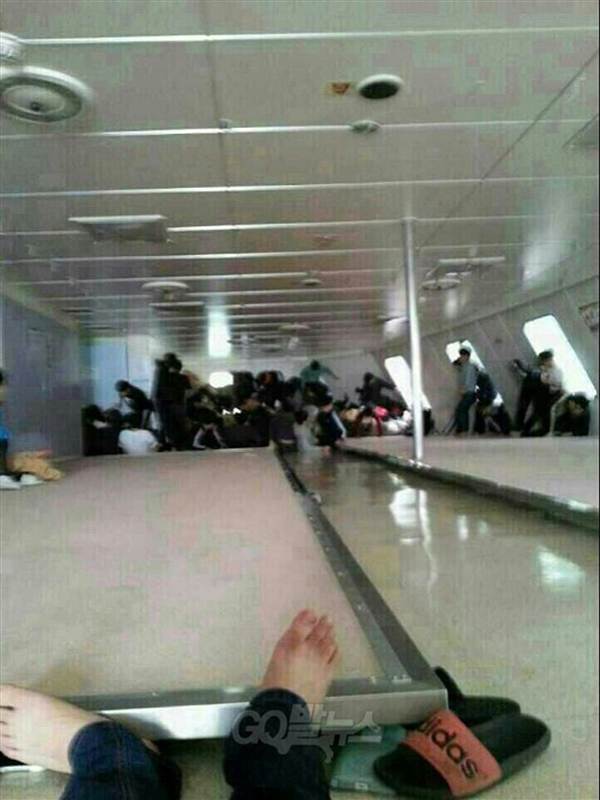
This is an example of images posted online by the students before the fated ship ultimately sank.
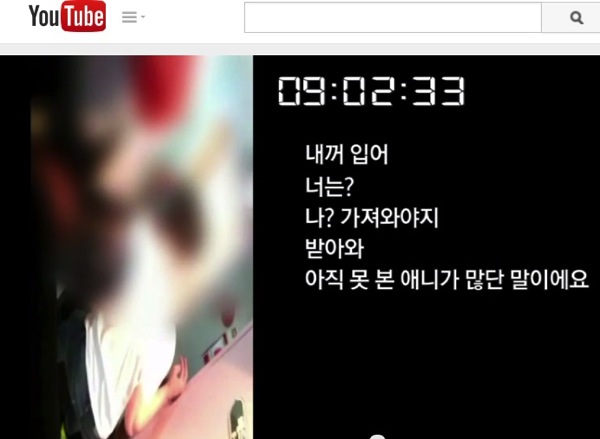
This is a screen shot from the cell phone video of one of the students who went down.
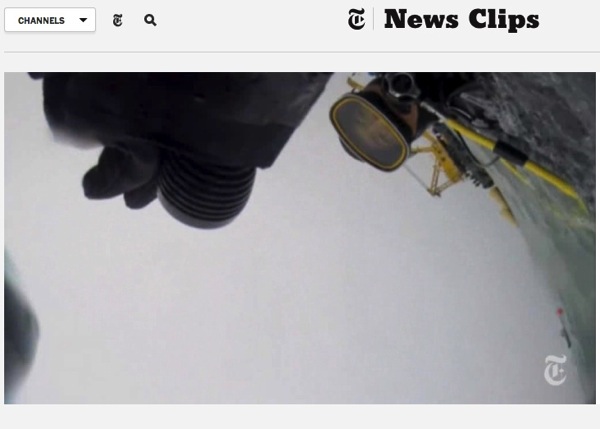
This is from a media clip of victim recovery operations. Documentation and broadcast is more intimate and immediate.
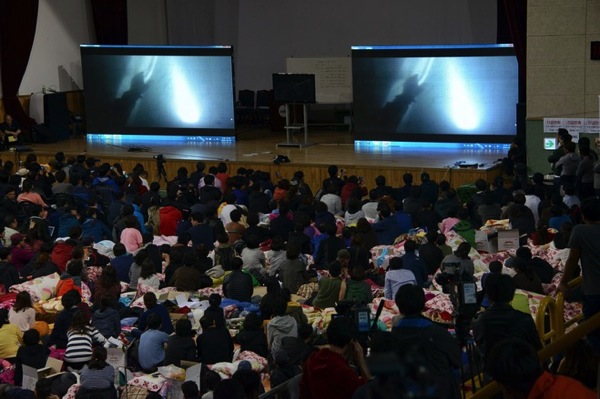
Many relatives of the victims experienced the crisis in Jindo gymnasium, in significant part, as a collective viewing process. Here we see citizens watching victim recovery operations on giant screens.
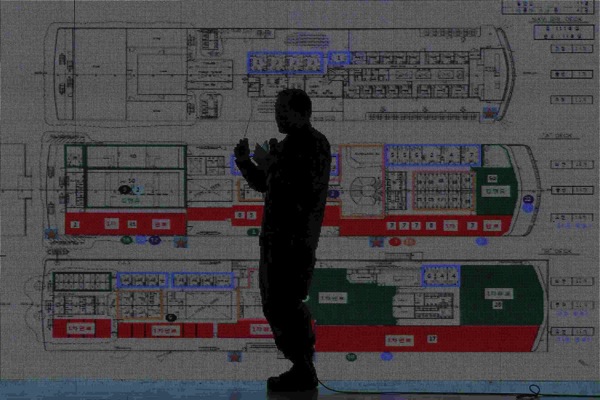
A rescue briefing at the gym. It’s hard to look at this — at least, from our layer (especially knowing the degree of incompetence and futility) — and perceive it as less than a performance.
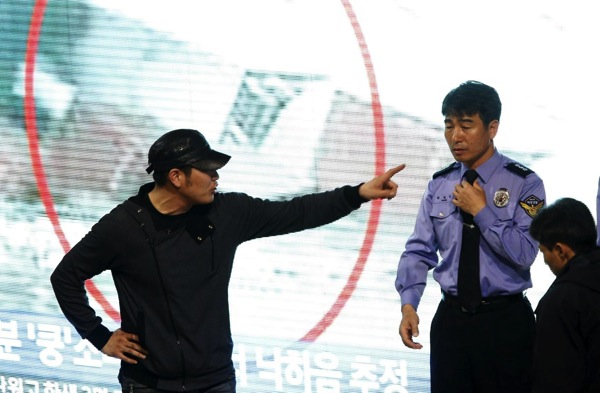
Captured in a circle isolating an element on screen, a relative of a victim confronts a Coast Guard official. Not knowing the relationship of the video to the behavior only makes this more surreal.
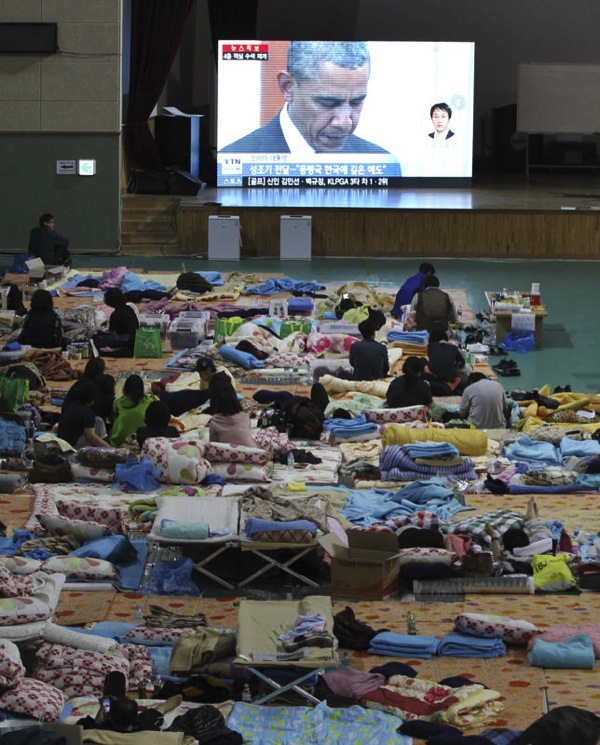
And then, we hardly blink twice in reading this as the President being with the families. (That is, until we realize that nobody is paying attention.)
(photo 1: via GlobalNews/FactTV via NBCnews.comm caption: Passengers wait for rescue aboard the Sewol ferry as it sinks in this image posted to a social media site by a student on the ship. photo 2: Newstapa via YouTube https://www.youtube.com/watch?v=zPbnODd1Wjc photo 3: via the NYT photo 4: Ed Jones/AFP/Getty Images. caption: Relatives watch underwater footage of divers exploring the submerged vessel Saturday. photo 5 & 6: Kim Kyung-Hoon/Reuters caption 5: A South Korea navy officer gives a briefing about a rescue operation to the family members of missing passengers onboard the sunken passenger ship Sewol, while showing an projection image of the ferry’s structural layout, at a makeshift accommodation at a gymnasium in the port city of Jindo April 25, 2014. More than 300 people, most of them students and teachers from the Danwon High School, are dead or missing presumed dead after the April 16 disaster. The Sewol ferry, weighing almost 7,000 tons, sank on a routine trip from the port of Incheon, near Seoul, to the southern holiday island of Jeju. caption 6: The family member of a missing passenger who was on South Korean ferry “Sewol”, which sank in the sea off Jindo, complains to an official from the South Korean Coast Guard as he listens to a briefing about the rescue operation, at a gym in Jindo April 18, 2014. A junior officer was at the helm of the South Korean ferry when it capsized and the captain may have been away from the bridge, investigators said on Friday as the search of the stricken vessel resumed and hopes faded for hundreds of people believed trapped inside. photo 7: Ahn Young-joon/AP caption: A TV screen shows U.S. President Barack Obama paying a silent tribute for the victims of South Korea’s sunken ferry Sewol during a summit meeting with South Korean President Park Geun-hye as relatives of victims watch at a gymnasium in Jindo, South Korea, Friday, April 25, 2014. As visiting Obama offered South Koreans his condolences Friday for the ferry disaster, the South Korean government conceded that some bodies have been misidentified and announced changes to prevent such mistakes from happening again.)
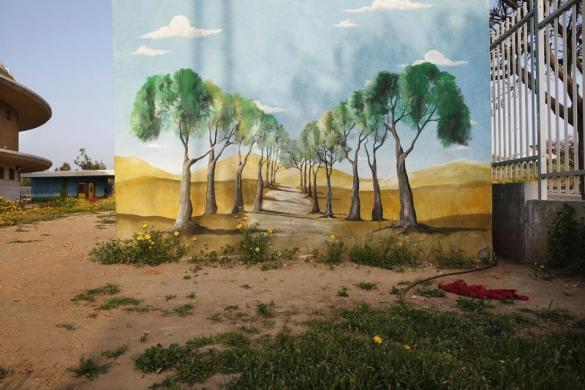

Reactions
Comments Powered by Disqus